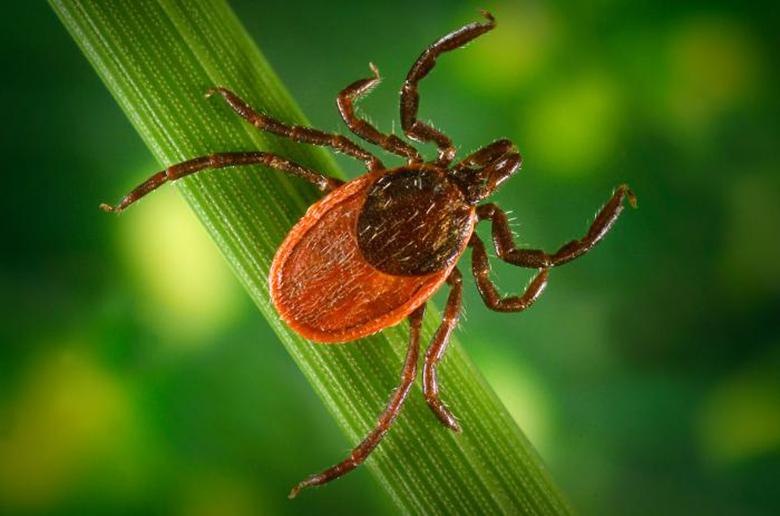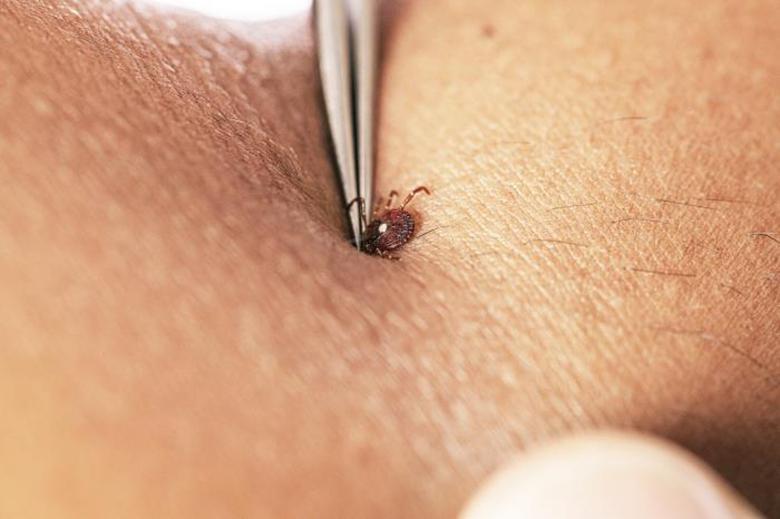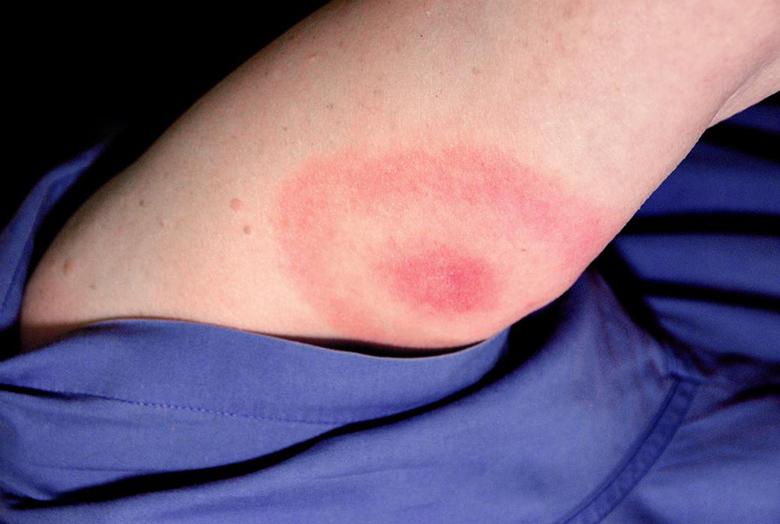At the recent inaugural Infectious Diseases in Appalachian Ohio Summit at Ohio University, health officials discussed the alarming increase in Lyme disease cases in Ohio. Similar increases have been observed nationally as well—according to the U.S. Environmental Protection Agency , the incidence of Lyme disease in the U.S. has approximately doubled since 1991.
Lyme disease is the most prevalent tickborne illness in Ohio and has become even more common with the increase in average ambient temperature in Ohio, which leads to increases in the state’s population of blacklegged (deer) ticks. There has been a 35-fold increase in Lyme disease cases reported in Ohio over the past 13 years, according to the Ohio Department of Health (ODH). When left untreated, Lyme and other diseases carried by ticks may cause severe and life-altering health problems.
Ohio University Associate Clinical Professor Dr. Jeff Vasiloff has done epidemiologic research on tickborne diseases and feels it is important for the public to be aware of these illnesses, how to prevent them and when to seek treatment. Dr. Vasiloff is part of the Division of Physician Assistant Practice in OHIO’s College of Health Sciences and Professions .
Ticks are most often found in wooded, brushy areas, but can be anywhere outside, and are most active during the spring and summer months. The property around many homes can provide equally sufficient habitats for ticks, especially those near wooded areas or areas with tall grass. Dr. Vasiloff says anyone who spends time outdoors is at potential risk of contracting a tickborne disease.
Tickborne illnesses actually don’t originate from ticks, most are zoonoses—infections people get from animals. Ticks acquire zoonotic diseases from feeding on infected animals, mainly rodents. These infections are often bacterial, protozoan or viral and different species of ticks carry different illnesses. In the case of Lyme disease, the bacteria Borrelia burgdorferi invades and lives in the salivary glands of the blacklegged tick. Carrying the disease has no effect on the tiny arachnids, but if an infected tick bites another human or animal the illness may be transferred.
Lyme disease is a reportable disease and cases are closely monitored by health departments throughout the country. Warmer temperatures in recent years have caused an increase in the blacklegged tick population, and more ticks mean more bites. In Ohio, cases of Lyme disease are reported every month of the year, but people are most at risk when ticks are most active in late spring through mid-summer. June and July are the months most Ohioans are actually bitten by Lyme-infected blacklegged ticks.
Vasiloff says there is no need to panic at the discovery of a tick bite. Those who’ve been bitten by a tick, even if the tick is infected, will not necessarily get sick.
“It takes a long time for them to be on you, sucking your blood to infect you,” said Vasiloff. “The tick is sucking blood into its body so it's a wonder that the bacteria ever get out of the tick because it must go against the stream of the flow of blood the opposite way. This usually doesn't happen unless the tick has been feeding for at least a day, some people even say two days.”
While this may sound reassuring, every tick bite should still be taken seriously. It is crucial to remove any attached tick as soon as possible, as discussed below. Regardless of how long a tick was biting, it is best to consult a healthcare professional for possible preventive treatment as soon as possible after the tick bite.
Prevention
The best way to prevent tickborne diseases is to prevent tick bites in the first place. Wearing long clothing and tucking it in when in tick habitats may prevent most bites and keep ticks on the outside of clothing. Light-colored clothing will make ticks even easier to spot and brush off. Spraying insect repellent labeled for use against ticks on any exposed skin as well as clothing and shoes will also help keep the bugs away. To further prevent bites, Vasiloff encourages everyone to inspect their bodies carefully after finishing outdoor activities.
“If you inspect your body, you should be able to see most ticks,” he said. “It’s important to inspect yourself or your partner looking in areas you can’t see. You can't see your back, but someone else can.”
Ticks on the skin that haven’t bitten can easily be brushed off. If a tick has bitten and attached itself, it is best to remove it as soon as possible to reduce the risk of infection. Removal is a simple process that can be done at home or urgent care. Simply take tweezers and grasp the tick as close to the skin as possible then pull it away from the skin with steady even pressure, ensuring the tick’s head is completely removed. After it is removed, wash the bite area with soap and water.
Symptoms and treatment
Diagnosing and treating Lyme disease, as well as any tickborne illness early is important to avoid further health problems. With Lyme disease, it can take anywhere from three to 30 days from when the tick bite occurs for symptoms or signs to appear, according to the Ohio Department of Health. Most symptoms are not specific to Lyme disease which leads to it not being suspected.
Lyme disease symptoms may include:
- Headache
- Fever
- Chills
- Muscle pain
- Joint pain
- Fatigue
- Loss of appetite
Most tickborne illnesses will cause any one or more of these symptoms, but the key indicator of Lyme disease is a large, distinctive “bull’s eye” rash called erythema migrans. Vasiloff says knowing someone has the bull’s eye rash and spends time outdoors is often enough to make the diagnosis of Lyme.
“If you ever have any of the symptoms and you're somebody who goes outdoors, you should definitely report to your physician assistant, doctor or nurse practitioner,” he said. “The somewhat lucky thing is 90% of people will get a rash where the tick has bit you. It's different than just a little bite lesion, this is a bigger rash that spreads out.”
When diagnosed early, Lyme disease is easily treated with antibiotics like doxycycline. Most people completely recover after being treated. Treatment may become more complicated if someone doesn’t know they’ve been bitten. According to Vasiloff, tick bites aren’t always noticeable and may be missed. For this reason, it is important for those who spend a lot of time outdoors to be proactive and reach out to a medical professional if any Lyme disease symptoms or rash become apparent.
“You may get a tick bite and then it’s been on you for a couple of days, and you don’t even notice it,” he said. “And sometimes you can have a tick bite on you, be on you for a few days and it falls off and you never know.”
In rare cases, those who have Lyme disease will continue to experience symptoms after treatment. Around five to 10% of people develop Post-Treatment Lyme Disease Syndrome, according to the Centers for Disease Control and Prevention . These prolonged symptoms often include fatigue, body aches or difficulty thinking. Symptoms improve with time in most cases but may still cause considerable suffering. Post-Lyme is being extensively researched, but the cause is currently unknown.
“We can't find evidence that the bacteria is living in them and still causing damage,” said Vaslioff. “But something has happened after the Lyme disease has been killed that leaves these people with this severe condition."






